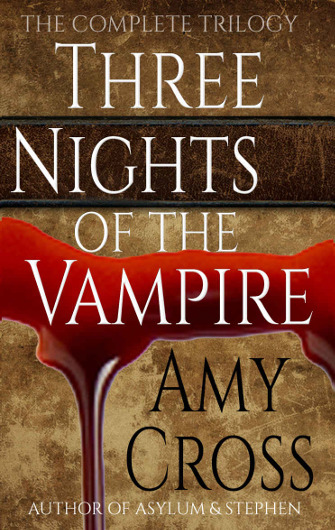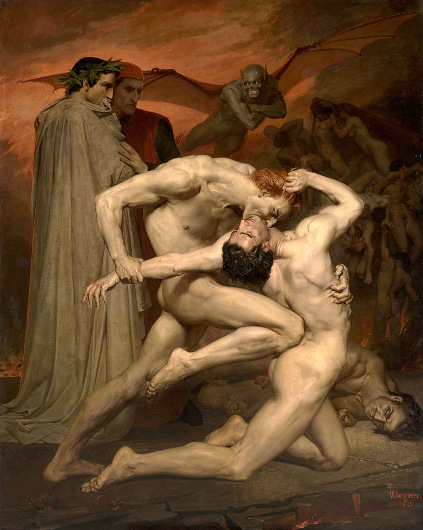

With the current Coronavirus pandemic, life seems to have become its own horror story. A novel illness is running rampant across the globe, streets have become eerily quiet, citizens have been ordered to self-isolate and panic has turned as contagious as COVID-19. But not all is as dire as it seems.
Since we’ve suddenly had to adjust to a new way of existing, I think everyone needs a break from reality and nothing provides that more readily than a good book! I’ve created a list of Top 10 Dark Reads with varying levels of darkness. Some embody gallows humor, while others are just plain morbid. They are presented in no particular order, but I do believe I saved the most sinister for last.
“Three Nights of the Vampire” Trilogy by Amy Cross

Amy Cross is a prolific writer releasing books just as fast as contagion spreads. Although I haven’t gotten to this collection, I’ve read other works by the author and her horror storylines are suspenseful. This trilogy follows a young woman who has relocated to Paris and finds herself unexpectedly in the center of a feud between two ancient sibling vampires. I’m excited to start the series and add to my vampire literature repertoire. I also recommend browsing through the numerous other titles Cross has published.
“Gothic Tales” by Elizabeth Gaskell

This is a quintessential compilation of dark Victorian literature and is Gaskell’s most morbid creation. As the headline promises, “Gothic Tales” presents eerie short stories weaving horrifying narratives of hysteria, curses, witch trials and sexually deviant behavior. Dig into anecdotes that include “Disappearances,” “The Grey Woman,” and “Curious, If True.” The book is 19th-century horror fiction at its best.
“The Hangman’s Daughter Tales” by Oliver Pötzsch

I’ve been keeping up with this series since the beginning and am currently reading the seventh book in the collection. Fans of historic fiction will have a particular penchant for these novels as they’re based on what life was like for hangmen in 17th-century Germany. Executioner Jakob Kuisl and his daughter Magdalena are the star characters who encounter spine-chilling, life-threatening predicaments. Fun fact: the author is descended from a line of hangmen! Get more details in my review here.
“The Black Arts” by Richard Cavendish

This non-fiction piece takes a scholarly approach to the realm of black magick. Cavendish was a historian who wrote extensively on the occult and “The Black Arts” is a premier study into the subject. Chapters explore alchemy, infamous black magicians, numerology, necromancy, conjuration, devil worship and more. I haven’t completed the book, but the knowledge I’ve gleaned so far is intriguing.
“The Vampyre” by John William Polidori

To many, Bram Stoker’s “Dracula” is the birth of vampire fiction, but Polidori’s novella, which predates Stoker’s work by nearly 80 years, is actually the progenitor of this genre. “The Vampyre” was written during a stormy summer when Polidori, Mary and Percy Shelley, and Lord Byron created a contest to see who could write the best ghost story. The plot features an enigmatic Lord Ruthven who attracts the attention of a young man named Aubrey. The two travel abroad together, but circumstances soon become unsettling to Aubrey who can’t seem to escape his companion.
“Pride & Prejudice & Zombies” by Seth Grahame-Smith

From the name, you probably guessed this book was inspired by the Jane Austen classic. Certain details remain the same, such as the tortured love dynamic between clever Elizabeth and snobby Mr. Darcy, but with gore, blood and monsters thrown in. The Bennet sisters are fully trained in martial arts by their father and are living during a time of an impending zombie apocalypse. It’s a hilarious read, especially when you imagine proper young ladies wielding sabers and engaging in combat. “Dawn of the Dreadfuls” and “Dreadfully Ever After” continue the story set forth in “Pride and Prejudice and Zombies,” but were penned by a different writer. It was also adapted into a film, but I recommend reading it first.
“Inferno” by Dante Alighieri

A narrative that takes you into the bowels of Hell needs to be included on this list. “Inferno” is Part I of the three-part, 14th-century poem “The Divine Comedy,” a veritable work of ingenuity from Italian writer Alighieri. Follow Dante as he descends the nine circles of Hell with Roman poet Virgil as his guide, each level more malevolent than the one before it. Unspeakable torture, rotting souls and nightmarish beasts are part of the journey. This is a challenging read, but well worth it.
“The Bad Seed” by William March

So, I haven’t read the book, but I saw the 1956 movie adaptation as a kid and was shocked. Horror flicks that feature a child as the central evil are absolutely twisted because it flips the wide held perception of children as the innocents. Rhoda is the little girl at the heart of the story who appears sweet, but then sociopathic behaviors emerge. When her mother draws connections between her daughter and the deaths of fellow students, the plot turns grisly. Yes, I’ve seen the film, but reading provides a different experience, so you can bet I’ll be diving into this soon. And if you haven’t, I do suggest watching the movie.
“Drawing Blood” & More by Poppy Z. Brite

I first heard of Poppy Z. Brite as a gothling because she was one of the authors whose work was required reading if you were in the goth scene. “Lost Souls,” a vampire story, catapulted her into the horror genre. She followed it with “Drawing Blood” where she put a different spin on the classic haunted house narrative. In it, we meet Trevor who returns to his childhood home in New Orleans to discover why his father murdered his family, then committed suicide. Ghosts of the past soon return to torture him. Brite’s third novel “Exquisite Corpse” incited controversy when it was released, dealing with topics such as necrophilia, cannibalism and victimization.
“The Simon Necronomicon” by Abdul Alhazred
![]()
Much mystery surrounds the existence of a real Necronomicon ever since H.P. Lovecraft first mentioned the ancient occult text in his fiction. The grimoire makes appearances in a few of Lovecraft’s stories where he credits a man named Abdul Alhazred, also known as The Mad Arab, as the creator of the original work. For Lovecraft, the Necronomicon was an element to further develop the mythos behind his tales, but several publications bearing the title have sprouted over the decades claiming to reveal the secrets of the true manuscript.
The version I purchased, “The Simon Necronomicon,” appears to be the most notorious. It was published during the 1970s and edited by a man named Simon who claimed this to be the testimony recorded by Alhazred in the 8th century. The work cautions readers to not take the incantations and rituals featured in the book lightly and to be wary of the forces summoned.
The editor is just as mysterious of a figure as The Mad Arab. It’s said he placed himself in mortal danger to obtain this “Book of the Black Earth,” and his whereabouts have been unknown since 1984. A man named Peter Levenda has been accused of being Simon, but he repeatedly denies it, although he does admit he was involved with the making of “The Necronomicon.” I also found a 2002 article titled “The Simon Interview” written by someone who said he tracked the editor down, discovered he was living in Malaysia and interviewed him via email. Regardless if the tome is fact or fiction, it has an enigmatic history.
I hope you enjoyed the selection, which gives but a taste of macabre works out there. This is a small pond of books among a vast ocean of dark literature that exists. I’m on a never-ending quest for material to add to my reading list, so please share your favorites!







That is a first rate excellent Top 10 list of must read dark books.
Some of those books I have read myself and the others you mentioned- I’d definitely want to read.
LikeLiked by 1 person
Thank you so much! I’m glad you like it.
LikeLike
You’re welcome. 🙂
LikeLiked by 1 person
Splendid selections, Jennifer.
Which is not at all what I prepared to write when i glanced at the topic initially. First thoughts were, dark literature is the last thing current circumstances require. Yet then…
The more I read your post, the more my mind changed. To the point that, by the time you concluded, my enthusiasm sparked. Why?.
You’re a talented writer yourself, and a creative describer, that’s why. By the time you were halfway through, things clicked. By the end, now, I determined to take up some of your suggestions. Not a bad bit of work in the space of a few paragraphs.
LikeLiked by 1 person
Many thanks! I wanted to describe the plots in a way that enticed but didn’t give anything away. Whichever ones you decide to read, I hope you enjoy!
LikeLike
Nice list, great choices especially the Polidori choice (which apparently Lord Byron had some influence on, see the excellent film ‘Gothic’ for more on this).
My choice would include ‘Carmilla’ by Sheridan Le Fanu a Vampire story which existed well before Stoker’s and Polidori’s versions.
LikeLiked by 1 person
Thanks for reading! I have heard about the speculations of Polidori stealing credit for “The Vampyre.” I’ll need to check out that film.
Yes, “Carmilla” is excellent! It was published in 1872, so it does predate Stoker’s, but Polidori’s was released in 1819.
LikeLike
Excellent Vampire lore knowledge and your right (thanks for correcting me) Polidori’s book was the first.
LikeLiked by 1 person